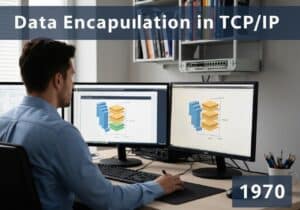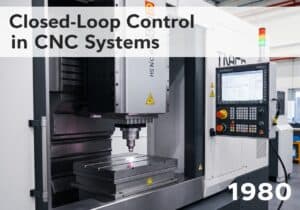برز تكامل نموذج نضج القدرات المتكامل (CMMI) باعتباره أحد النماذج المهمة نطاق للمؤسسات التي تسعى إلى تعزيز كفاءة عملياتها، خاصة في مجالات مثل تطوير البرمجيات وهندسة النظم وإدارة خدمات تكنولوجيا المعلومات. ويقدم CMMI، الذي نشأ من نموذج نضج القدرات (CMM)، نموذجاً شاملاً خريطة الطريق للمؤسسات لتحقيق أداء أعلى من خلال خمسة مستويات نضج متميزة: مبدئي ومُدار ومحدد ومُدار كمياً ومُدار كمياً ومُدار كمياً ومُدار كمياً ومُدار كمياً.
النقاط الرئيسية

- تحسين CMMI قدرة العملية للمنظمات
- خمسة مستويات للنضج توجه النمو المؤسسي التدريجي للمؤسسة
- مواءمة مجالات العمليات مع النضج لتحسين الأداء
- طرق التقييم تقييم الامتثال وحالة التحسينات
- يؤدي اعتماد CMMI إلى تحسين الجودة والقدرة على التنبؤ
تعريف نموذج نضج القدرات المتكامل CMMI والغرض منه
يعمل نموذج نضج القدرات المتكامل (CMMI) كإطار عمل منظم يهدف إلى تحسين العمليات المؤسسية. ويزود هذا النموذج المؤسسات بالأدوات الأساسية اللازمة لتحسين عملياتها. برمجة التطوير وهندسة النظم وإدارة خدمات تكنولوجيا المعلومات والمجالات الأخرى ذات الصلة. ويؤدي تطبيقه إلى إنشاء ممارسات موحدة، مما يضمن الاتساق والقدرة على التنبؤ عبر مشاريع متعددة.

ويتمثل أحد الأغراض الأساسية لنموذج "سي إم إم آي" في تحديد مسار واضح للمؤسسات للتطور من ممارساتها الحالية نحو عمليات أكثر نضجاً وكفاءة. ويوفر النموذج سلسلة من أفضل الممارسات التي يمكن للمنظمات اعتمادها خطوة بخطوة، مما يعزز التحسين المستمر.
تنقسم CMMI إلى مجموعات مختلفة، كل منها مصممة خصيصاً لتلبية احتياجات الصناعة المحددة.
- CMMI للتطوير (CMMI-DEV)
- CMMI للخدمات (CMMI-SVC)
- CMMI للاستحواذ (CMMI-ACQ)
وتسمح هذه القدرة على التكيّف للمؤسسات باختيار مجموعة معايير "سي إم إم آي" المناسبة التي تتماشى مع أهدافها التشغيلية والتحديات التي تواجهها. ويؤكد الإطار على أهمية إنشاء ثقافة تتمحور حول التفكير الموجه نحو العمليات والتعلم التنظيمي.
نصيحة: النظر في إجراء تمرين "اكتشاف العمليات" داخل مؤسستك قبل اعتماد مبادرة إدارة التغيير والتجديد في إدارة الأعمال. ويتضمن ذلك رسم خريطة لعملياتكم الحالية لتحديد الثغرات ومجالات التحسين. ويمكن لهذا التحضير أن يسهّل التنفيذ اللاحق لمبادرة "سي إم إم إم آي" ويعزز تأييد أصحاب المصلحة من خلال زيادة وضوح القدرات الحالية والاحتياجات المستقبلية.
التاريخ والتطور من نموذج نضج القدرات CMM إلى CMMI
تم تطوير نموذج نضج القدرات (CMM) في البداية من قبل معهد هندسة البرمجيات (SEI) في جامعة كارنيجي ميلون في أواخر الثمانينيات. وكان هدفه الأساسي مساعدة المؤسسات على تقييم عمليات تطوير البرمجيات وتحسينها. قدم CMM إطار عمل منظم يحدد خمسة مستويات نضج، مما يسمح للمؤسسات بالتطور التدريجي من العمليات الفوضوية إلى عمليات محسنة للغاية. وكان هذا النموذج في البداية يركز إلى حد كبير على هندسة البرمجيات ووفر أساساً للمؤسسات لتقييم ممارساتها وتنفيذ تحسينات في جودة البرمجيات والتكلفة وأداء الجدول الزمني.

ومع توسع الهندسة والإدارة لتشمل هندسة النظم وإدارة خدمات تكنولوجيا المعلومات، أصبحت الحاجة إلى نهج أكثر تكاملاً واضحة. وهكذا، في عام 2002، تم تقديم CMMI، ودمج أطر متعددة لتحسين العمليات في نموذج واحد.
وقد دمجت CMMI أفضل الممارسات من CMM، ونموذج قدرات هندسة النظم، ونموذج قدرات تطوير المنتجات المتكاملة، وغيرها.
واحتفظ النموذج بمستويات النضج الخمسة، لكنه وسّع مجالات العمليات بشكل كبير. على سبيل المثال، أدخلت CMMI مجالات تركيز إضافية مثل إدارة المخاطر والإدارة المتكاملة للمشروع، مما جعله أكثر تنوعاً لمختلف القطاعات.
| السنة | الطراز | محور التركيز الرئيسي |
|---|---|---|
| 1989 | CMM | تطوير البرمجيات |
| 2002 | CMMI | تحسين العمليات المتكاملة |
نصيحة: يجب على المؤسسات عند اعتماد CMMI، أن تجري تحليلاً للثغرات في عملياتها الحالية مقارنة بإطار عمل CMMI لتحديد مجالات التحسين بفعالية.
مستويات النضج الخمسة لإطار عمل CMMI
تُعتبر مستويات النضج الخمسة لإطار عمل تكامل نموذج نضج القدرات (CMMI) بمثابة مسار منظم للمؤسسات التي تهدف إلى تحسين عملياتها. ويبني كل مستوى على المستوى الذي سبقه، ويمثل تقدماً نحو تعزيز قدرات العمليات وإضفاء الطابع المؤسسي عليها. ويتم تحديد خصائص كل مرحلة على النحو التالي:

مستوى النضج 1: مبدئي
- الخصائص: العمليات في هذا المستوى عادة ما تكون مخصصة وفوضوية. قد يتم إنجاز العمل، ولكن غالبًا ما يكون العمل غير متوقع وتفاعلي ومتأخرًا ومتجاوزًا للميزانية في كثير من الأحيان. يعتمد النجاح بشكل كبير على الجهد الفردي بدلاً من العمليات المحددة.
- النمو التنظيمي: تبدأ المنظمة في إدراك الحاجة إلى تحسين العملية ولكنها تفتقر إلى الممارسات الراسخة.
مستوى النضج 2: المستوى 2: مُدار
- الخصائص: يتم إنشاء العمليات الأساسية لإدارة المشاريع لتتبع التكلفة والجدول الزمني والوظائف. يتم تخطيط المشاريع وتنفيذها وقياسها والتحكم فيها على مستوى المشروع، ولكن ليس بالضرورة أن تكون موحدة على مستوى المنظمة. يتم وضع الانضباط لتكرار النجاحات السابقة في مشاريع مماثلة.
- النمو التنظيمي: تبدأ المنظمة في إدارة المشاريع بعمليات محددة، مما يؤدي إلى نتائج أكثر قابلية للتنبؤ بها للمشاريع الفردية. ولا تزال هناك مشاكل يتعين حلها على المستوى التنظيمي الأوسع نطاقا.
مستوى النضج 3: محدد
- الخصائص: أن تكون العمليات واضحة المعالم وموثقة وموحدة ومدمجة في العمليات القياسية للمؤسسة. توفر المعايير على مستوى المؤسسة التوجيه عبر المشاريع والبرامج والمحافظ. تستخدم جميع المشاريع نسخة معتمدة ومصممة خصيصًا من العمليات القياسية للمؤسسة لتطوير المنتجات والخدمات وصيانتها. ويعد هذا المستوى استباقيًا وليس تفاعليًا.
- النمو التنظيمي: ترسي المنظمة الاتساق والفهم المشترك للعمليات عبر مختلف المشاريع والإدارات. وهذا يؤدي إلى تحسين الجودة والكفاءة.
مستوى النضج 4: الإدارة الكمية
- الخصائص: تقوم المنظمة بجمع المقاييس التفصيلية لـ أداء العملية وجودة المنتج. يتم فهم كل من العمليات والمنتجات كمياً والتحكم فيها باستخدام التقنيات الإحصائية وغيرها من التقنيات الكمية. يتم وضع الأهداف الكمية للجودة وأداء العمليات واستخدامها كمعايير في إدارة العمليات.
- النمو التنظيمي: تكتسب المؤسسة فهمًا أعمق لقدراتها العملية ويمكنها التنبؤ بالأداء. وهذا يتيح اتخاذ القرارات المستندة إلى البيانات والتحكم بشكل أكثر فعالية في النتائج.
مستوى النضج 5: التحسين
- الخصائص: يركز هذا المستوى على التحسين المستمر للعمليات. يتم تمكين التحسين من خلال التغذية المرتدة الكمية من العملية ومن تجريب الأفكار المبتكرة و التقنيات. تتسم المنظمة بالاستقرار والمرونة في الوقت نفسه، وهي قادرة على التكيف مع احتياجات العمل المتغيرة وتحسين عملياتها بشكل استباقي.
- النمو التنظيمي: تتمتع المنظمة بثقافة التحسين المستمر و ابتكار. يتم تنقيح العمليات وتكييفها باستمرار لتلبية الأهداف المتطورة وتعزيز الأداء.
من المهم ملاحظة أنه يمكن تقييم CMMI باستخدام نهجين:
- ينتج عن النهج المرحلي، الموضح أعلاه، تصنيف مستوى النضج من 1 إلى 5.
- يسمح النهج المستمر للمؤسسة بالتركيز على مجالات عملية محددة وتحقيق مستويات القدرة لكل منها.
نصيحة: إعطاء الأولوية لإشراك فرق متعددة الوظائف عند تنفيذ مجالات عمليات مبادرة "سي إم إم آي". ويمكن أن يؤدي وجود وجهات نظر متنوعة إلى رؤى أكثر ثراءً وتكييفات أكثر فعالية للعمليات، مما يسهل في نهاية المطاف الانتقال السلس بين مستويات النضج.
طرق التقييم الخاصة بتقييم CMMI
Appraisal methods employed for Capability Maturity Model Integration (CMMI) compliance primarily fall into two categories: formal and informal appraisals. Formal appraisals, such as the CMMI Institute’s Standard Appraisal Method for...
لقد قرأت 44% من المقال. الباقي لمجتمعنا. هل أنت عضو بالفعل؟ تسجيل الدخول
(وأيضًا لحماية المحتوى الأصلي لدينا من روبوتات الكشط)
مجتمع الابتكار العالمي
تسجيل الدخول أو التسجيل (100% مجاناً)
اطلع على بقية هذه المقالة وجميع المحتويات والأدوات الخاصة بالأعضاء فقط.
فقط المهندسون والمصنعون والمصممون والمسوقون الحقيقيون المحترفون.
لا روبوت، ولا كاره، ولا مرسل رسائل غير مرغوب فيها.































هل فكر أحدكم في كيفية تفاعل مستويات CMMI مع المنهجيات الرشيقة؟ يبدو لي وكأنه صدام محتمل بين الثقافات.
يمكن لـ"سي إم إم آي" و"أجايل" أن يتعايشا معاً. لا يشكل النضج المؤسسي عائقاً أمام الرشاقة، بل حافزاً لها.
بالتأكيد! إن CMMI و"أجايل" لا يستبعد أحدهما الآخر، بل يمكن أن يكمل كل منهما الآخر بشكل جيد.